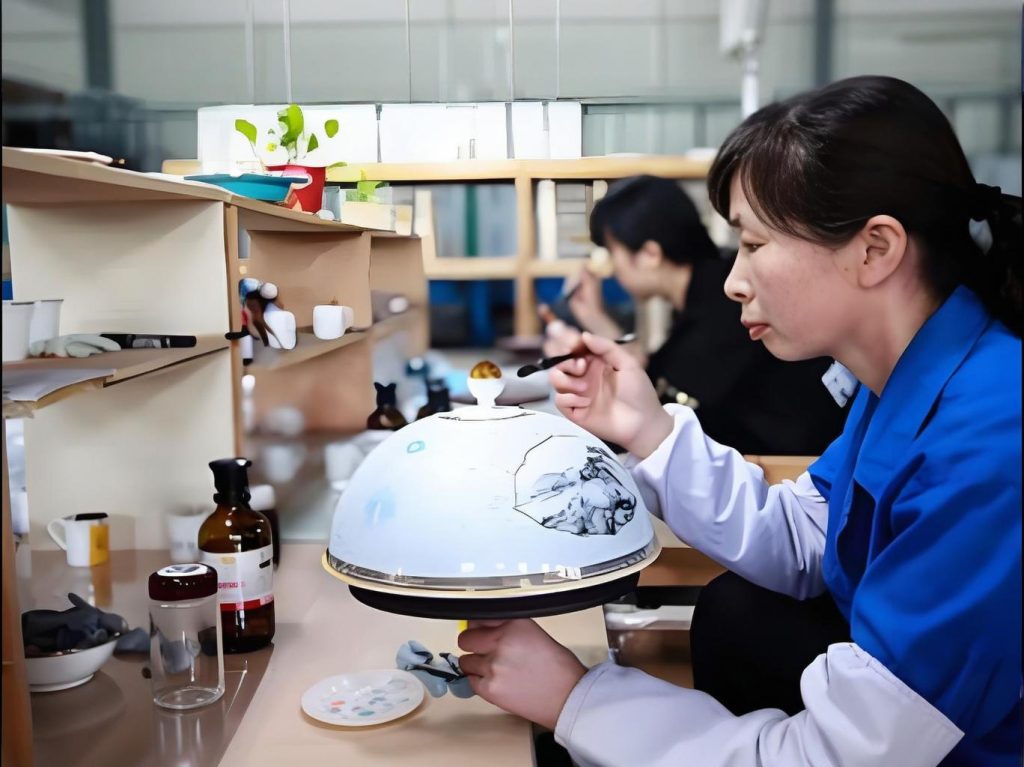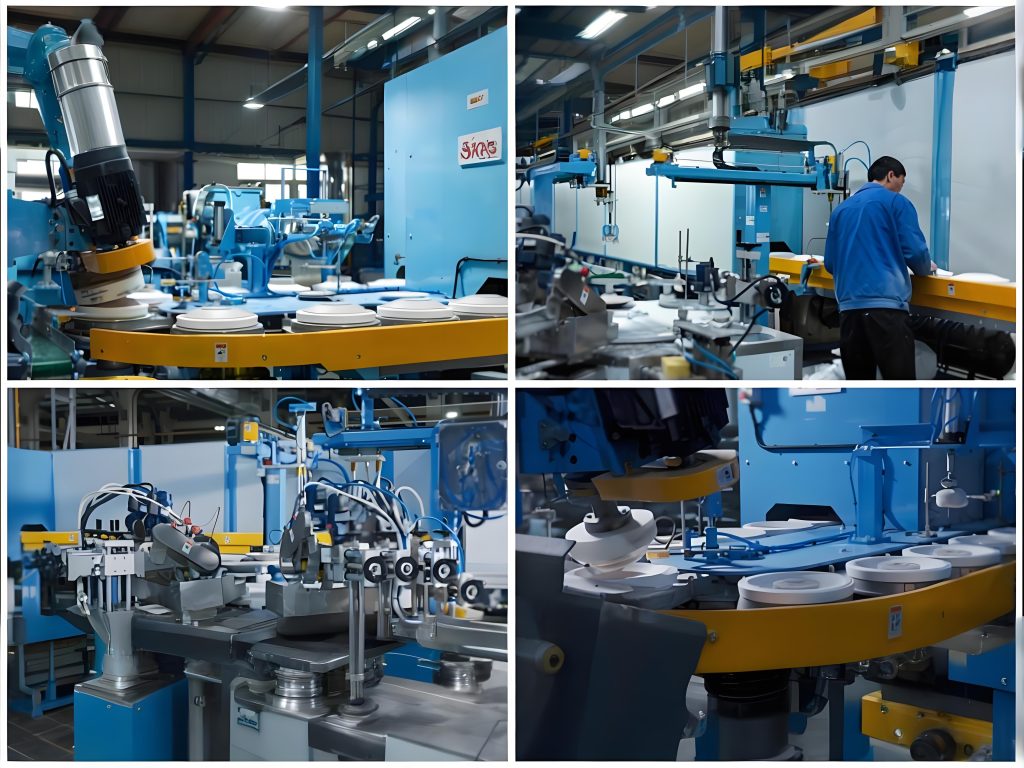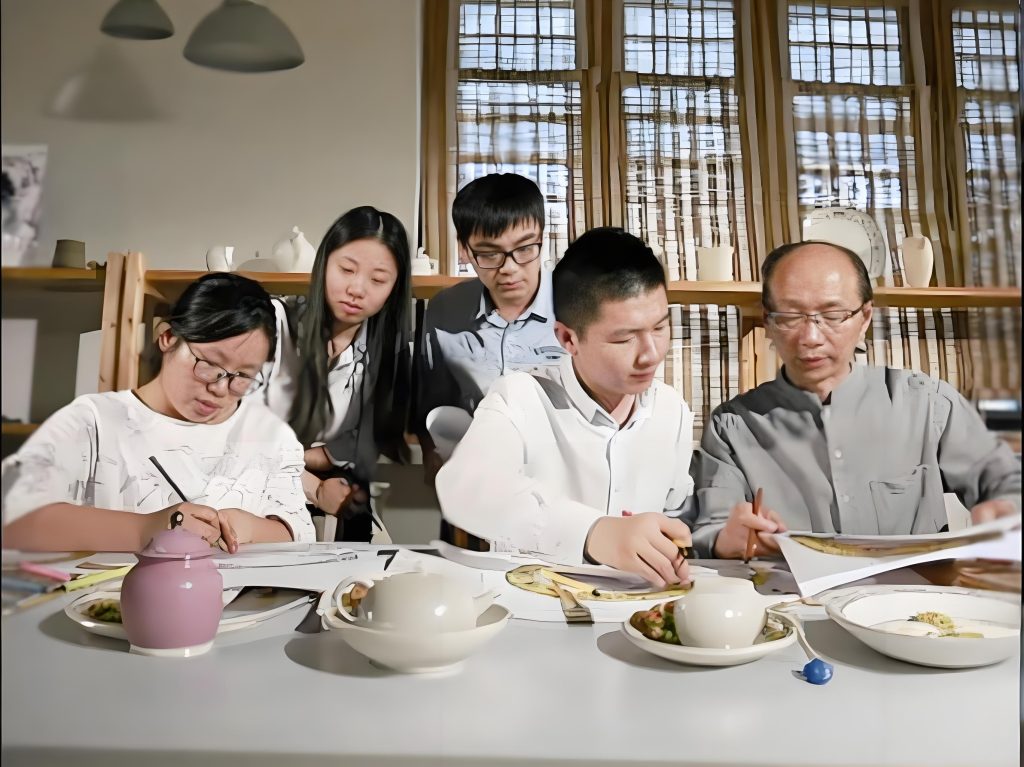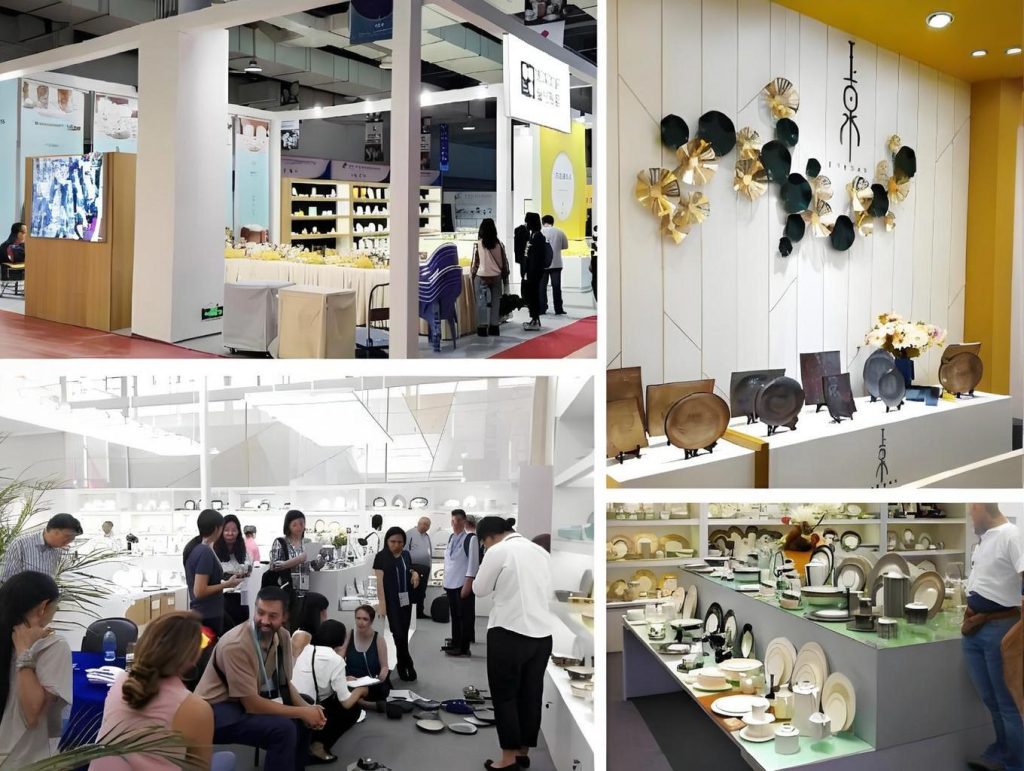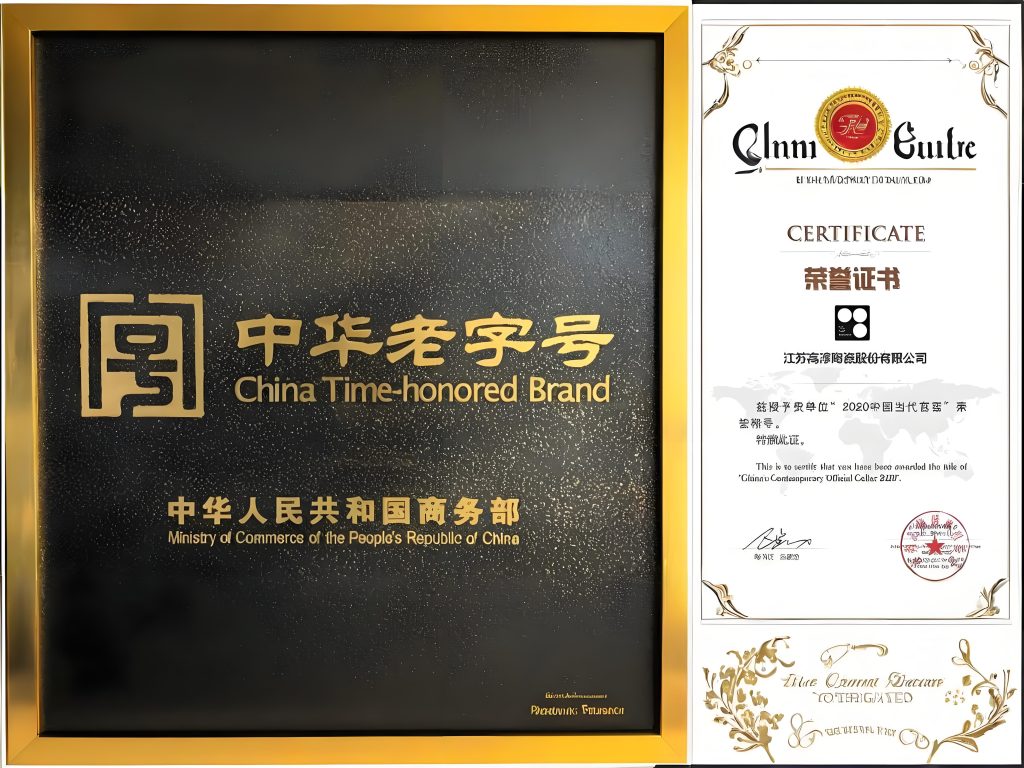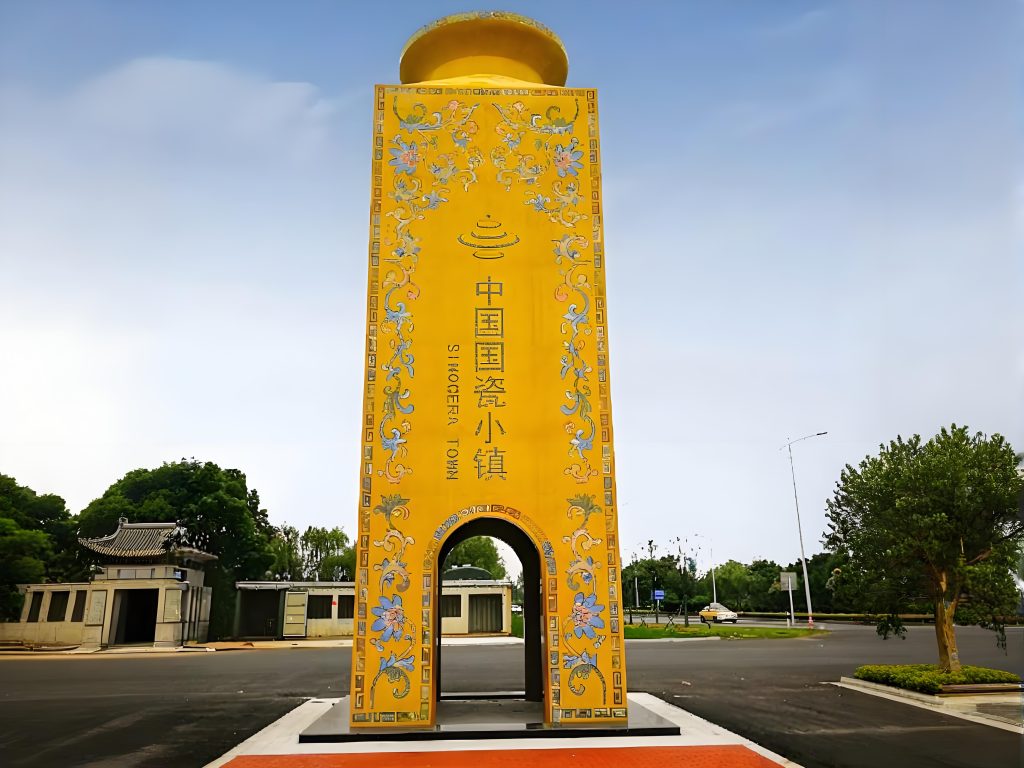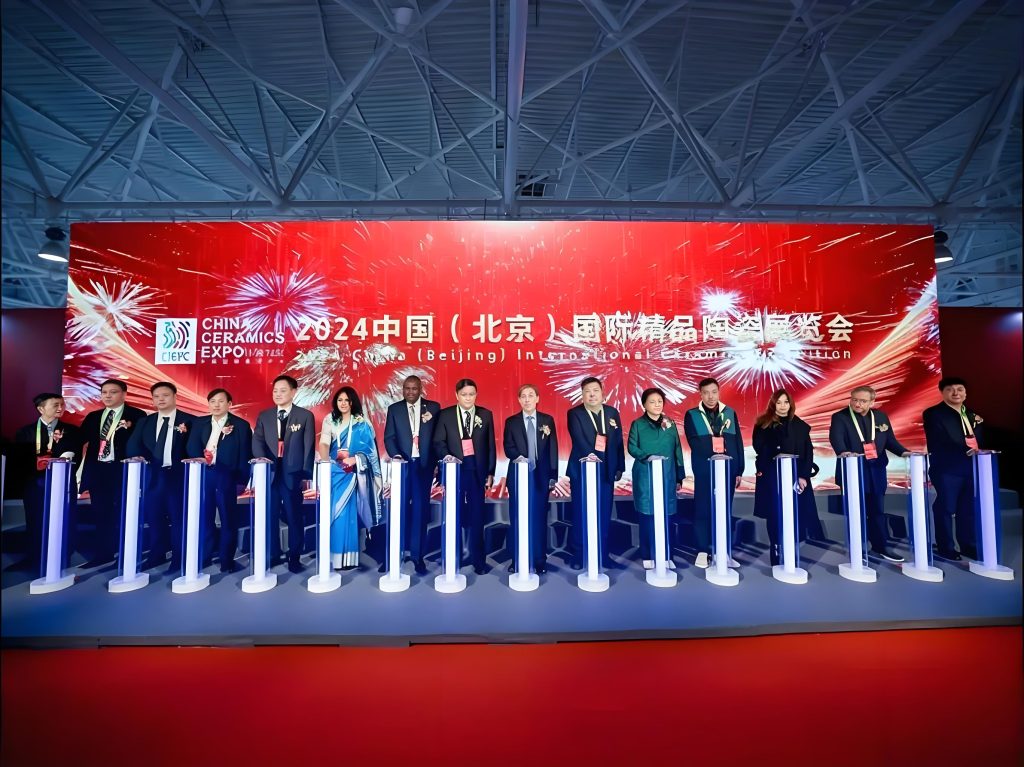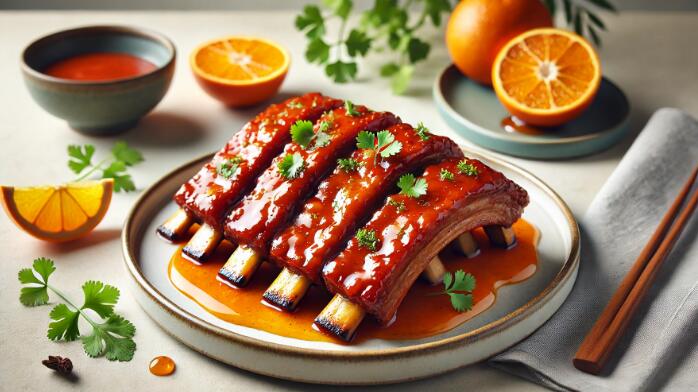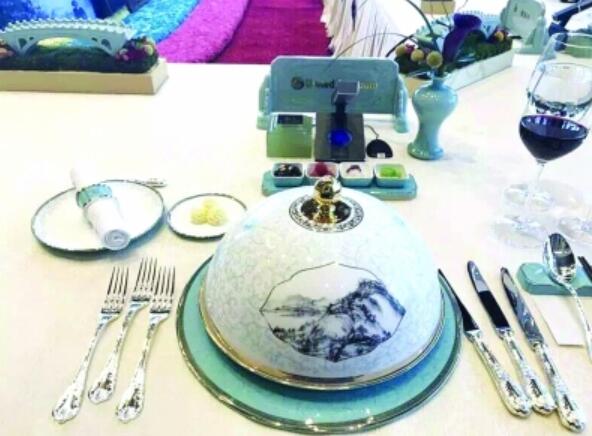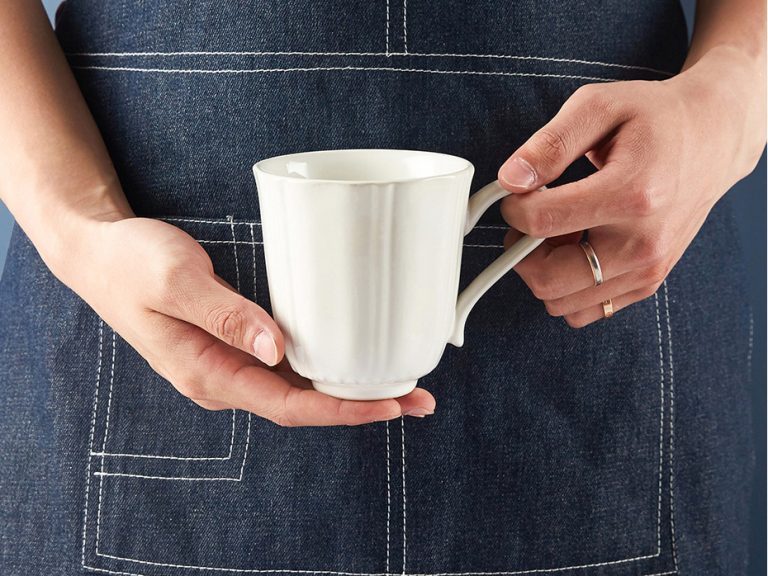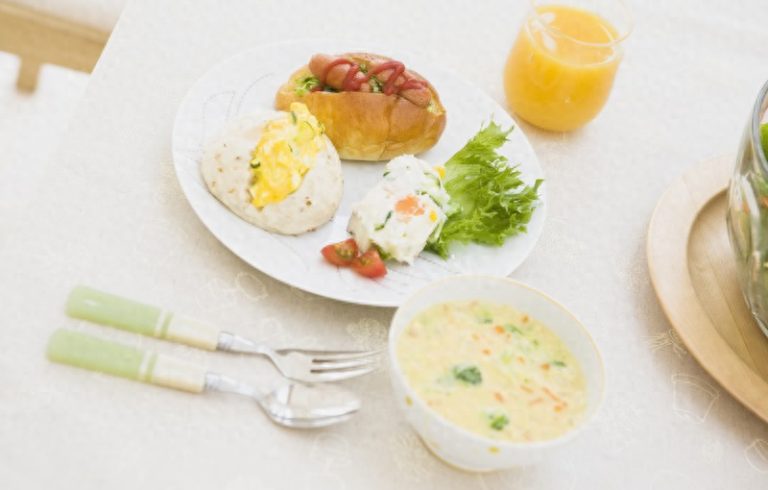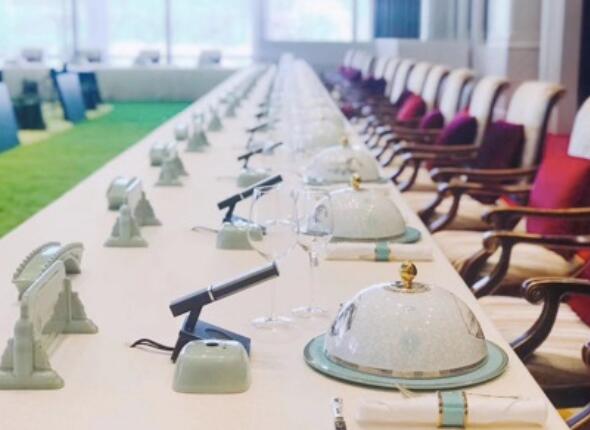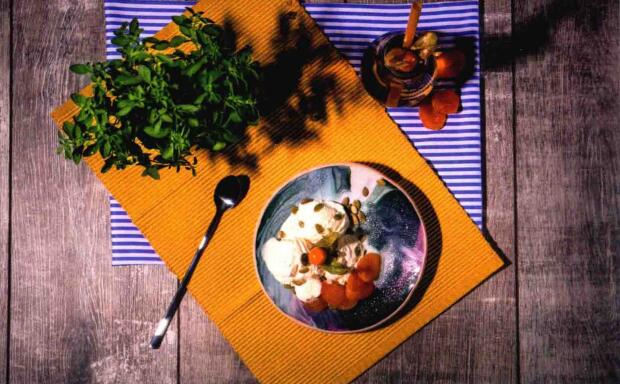The Aesthetics of Tea Set Arrangement
In the process of selecting, matching, and combining tea utensils, the tea enthusiast creates beauty within the tea art activity. When choosing and matching tea utensils, it is important to follow the basic principles of matching while paying special attention to the color, shape, texture, and combination effect of the tea utensils. At the same time, appropriate decorations and enrichments can be added during the matching process.
Basic Principles of Tea Set Matching
In summary, ten words: practical, simple, clean, elegant, harmonious.
Emphasizing the practicality of tea sets is determined by their inherent scientific nature. For example, a Yixing clay teapot, where the spout is level with the rim, pours smoothly, and the seams between the pot and the lid are tight, are key details that determine whether it is handy during use. The consideration of its steady and elegant shape comes after.
Simplicity represents a composed attitude. Tea enthusiasts do not pursue “a pot worth a thousand gold pieces.” Even an ordinary glass cup can be good if you like it. Cleanliness is crucial; tea sets are not Bodhi trees, so they must be frequently wiped to prevent dust accumulation. Regardless of whether they are used or not, even during busy days, one can take a few minutes to clean and organize them. It is disheartening to see tea sets in a tea house display cabinet covered in dust; even good items can be ruined by poor display. The design of tea sets is more about imagination than execution. Therefore, beauty is difficult to define simply. When you face a true piece of art, your breathing deepens, and your eyes feel moist—the moment of this emotional connection is the origin, which is beauty. Harmony is expressed in the proportion and hierarchy of various tea sets, including auxiliary tools, matching in tone and form, and possessing a unified harmony.
The Colors and Pairing of Tea Sets
When choosing the colors of tea sets, a fundamental principle is to match and coordinate with the tea leaves, emphasizing the complementarity and enhancement between the colors of the tea sets and the tea leaves. For example, pottery tea sets often come in yellow, reddish-brown, brown, gray, and other colors, giving a rough and subdued impression, which appears simple and natural, and aligns well with the feeling of heavily roasted semi-fermented tea and aged Pu’er tea. On the other hand, porcelain tea sets are often glazed, with rich and elegant colors, giving a delicate impression, matching well with unfermented green tea, heavily fermented Baihao Oolong, and fully fermented black tea. For instance, light green celadon is well-coordinated with brewing green tea and clear tea. White porcelain is suitable for brewing white tea and yellow tea; blue and white porcelain and painted porcelain can represent Baihao Oolong, black tea, or smoked and flavored teas. Glazes in iron red, purple gold, or Jun kiln styles are suitable for pairing with teas like Dong Ding, Tieguanyin, and Shuixian. Glazes in tea dust, tenmoku, and pickled vegetable colors are used to represent dark tea.
So, what colors of tea sets are suitable for various types of tea? Summarized as follows:
Green tea: Suitable for transparent glass cups, colorless, unadorned, and without lids. Alternatively, white porcelain, celadon, or blue and white porcelain cups without lids.
Black tea: Purple clay with white interior glaze, white porcelain, red glaze porcelain, and warm-colored porcelain pots and cups, lid cups, and lid bowls.
Yellow tea: Milk white or yellow glaze porcelain, and yellow-orange colored pots and cups, lid bowls, and lid cups.
White tea: White porcelain or yellow clay stoneware pots and cups, and black porcelain with colored interior walls.
Oolong tea (green tea): Purple clay pots and cups, or white porcelain pots and cups, lid bowls, and lid cups are the best.
Dark tea: Especially Pu’er tea, suitable for thick-bodied purple clay pots, transparent glass tea pitchers, purple clay cups with white interior glaze, or pickled vegetable colored porcelain cups.
Reprocessed tea: Flower tea can use celadon, blue and white porcelain, etc., lid bowls, and lid cups; shaped tea can use tall, deep transparent glass cups.
The Design and Matching of Teaware
In a tea set, the shape of the teapot holds a very important position within the whole set. Therefore, the main focus here is on the form of the primary brewing vessel—the teapot.
From a visual perspective, the appearance of the teapot should match the color of the teaware and the tea itself. For instance, using a purple clay pine bark teapot to brew Longjing tea would not be as harmonious as using a yellow-green pumpkin-shaped porcelain teapot. However, a purple clay pine bark teapot is very suitable for brewing Tieguanyin.
In terms of tea brewing functionality, the shape of the teapot affects heat dissipation, convenience, and aesthetic appreciation. Teapots with wide openings, like gaiwan (lidded bowls), have better heat dissipation, making them ideal for brewing teas that require water temperatures of 70-80°C. Thus, gaiwan is often used for brewing green tea, jasmine tea, and white-haired oolong. Wide-mouthed teapots and gaiwan are also exceptionally convenient for placing tea leaves and removing residue. Many people prefer using gaiwan for this reason. After brewing tea in a gaiwan or a teapot with a wide opening similar to a gaiwan, it is easy to appreciate the unfolding of the tea leaves and the color and concentration of the tea, which is beneficial for appreciating the tea leaves and controlling the tea liquor. Especially for teas like Longjing, Biluochun, Silver Needle, and White-haired Oolong that emphasize appearance, this type of brewing vessel, when paired with the appropriate color tone, is an excellent method of presentation.
From an aesthetic perspective, modern teaware features refined designs and smooth lines, generally based on geometric combinations. The structure of the teapot includes the body, spout, lid, and handle or handlebar. The design style can be either classical or more avant-garde. The overall shape should achieve variation within uniformity, with the body of the teapot conveying a sense of volume, the handle and handlebar reflecting the rhythm of lines, and the spout and lid showing the changes of points.
| Tips | Source |
|---|---|
| Light green tea and white tea are best brewed with thin-walled materials such as glass or porcelain teaware to avoid overheating the tea leaves. | Red Blossom Tea |
| Yixing teapots, due to their porosity, are suitable for brewing highly fermented teas like ripe Pu-erh, as they can absorb and harmonize the strong aromas in the tea. | Mud and Leaves |
| Oolong tea that has undergone heavy fermentation or roasting is usually paired with darker-colored Yixing teapots, such as those containing red clay, which better preserve the full flavor of the tea leaves. | Path of Cha |
| Dark tea, like ripe Pu-erh, is suitable for brewing with a teapot that has high heat retention capability to help release the complex aromas of the tea. | Path of Cha |
| Glass tea sets are fragile and should be handled with care when cleaning. It is recommended to use warm water and a soft cloth for cleaning. | Tea Brew Crew |
| White tea is best brewed using porcelain tea sets, especially fresh and high-grade white tea such as Silver Needle, as porcelain can preserve the delicate aroma of the tea leaves. | Mud and Leaves |
| Cast iron teapots need rust prevention treatment. After use, thoroughly dry the inside and lightly coat the inner wall with neutral edible oil to form a protective layer. | Tea Brew Crew |
| It is best to use dedicated tea utensils for each type of tea, especially a Yixing teapot, because it absorbs and retains the aroma of the tea, affecting the flavor of subsequent tea leaves. | Mud and Leaves |
| Enamel teapots should avoid using metal utensils to prevent scratching the glaze. | Tea Brew Crew |
| Green tea and white tea are not suitable for brewing in a purple clay teapot because these teas require lower temperatures. The high heat retention of the purple clay teapot can destroy the delicate aroma of the tea leaves. | Mud and Leaves |
Texture and Matching of Tea Sets
To be specific, the texture of the tea set will affect the brewing effect. The texture here mainly involves two aspects: one is the density of the pot, and the other is whether the inner wall of the tea set has a glaze layer.
The Density of the Pot and Tea Brewing
High-density pots brew tea with a relatively clear and bright aroma, while low-density pots brew tea with a relatively deep aroma. If the tea style is relatively clear and bright, such as green tea, light tea, jasmine tea, white tip oolong, and black tea, then use a pot with higher density, such as a porcelain pot. If the tea style is relatively deep, such as Tieguanyin, Shuixian, Foshou, and Pu’er, then use a pot with lower density, such as a clay pot. This is similar to the principle of using different cooking utensils in daily life. For stir-frying vegetables, we want the vegetables to be crisp and green, so we use an iron pot and high heat for quick stir-frying. For cooking fish head, we prefer to use a clay pot or a stew pot for slow cooking over low heat. If we use an iron pot to cook fish head, it is still edible, but the fish soup will not be as thick and smooth; if we use a clay pot to stir-fry vegetables, it will certainly turn out badly.
Density is related to the sintering degree of ceramic tea sets. How do we choose and distinguish? Generally, it is expressed by sound and water absorption. A clear sound when tapped and low water absorption indicate a high sintering degree and high density, otherwise, the sintering degree is low, and the density is also low.
The Glaze Layer on the Inner Wall of the Tea Set and Tea Brewing
The inner wall of the tea set with a glaze layer is generally used in clay tea sets. The glazed ones allow people to appreciate the beauty of the glaze color, while the unglazed ones allow people to appreciate the beauty of the clay itself. Yixing Zisha pottery represents the latter and expresses the beauty of the clay most profoundly.
Unglazed Zisha tea sets have better water absorption. After prolonged use, the tea and the pot will complement each other, enhancing the tea fragrance. Tea brewed in a used pot tastes richer than tea brewed in a new pot. However, if you use an unglazed pot to brew different types of tea, there will be mutual interference, especially with old pots or pots with high water absorption. If you like to use unglazed Zisha pots, it is best to dedicate each pot to a specific type of tea. If you only have one pot for various types of tea, it is better to use a glazed pot inside to avoid flavor crossover. Therefore, the standard cups used by tea tasters to evaluate various teas are all glazed porcelain inside and out.
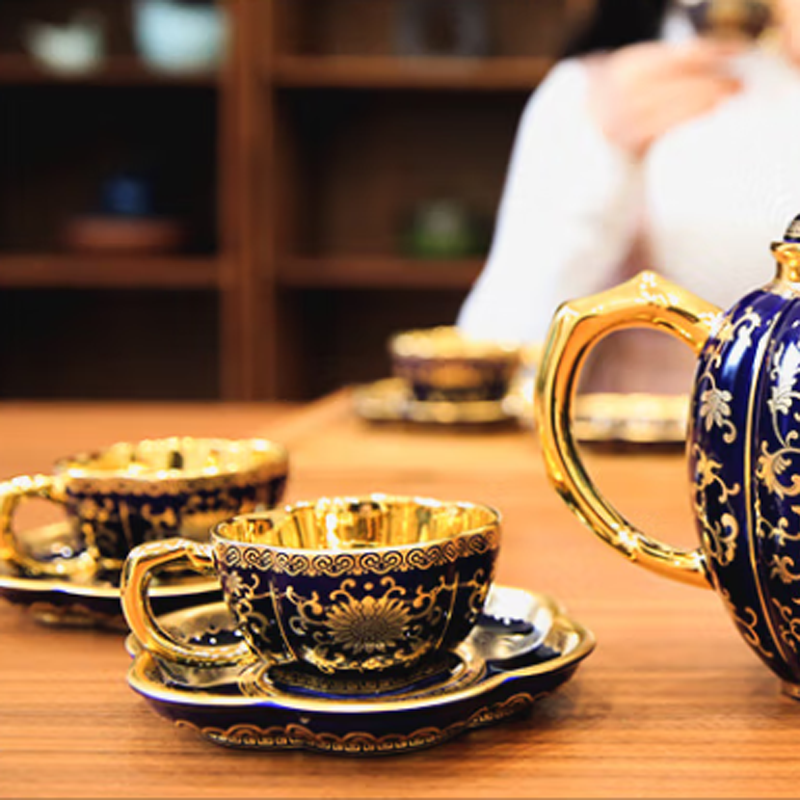
The Combination Aesthetics of Tea Sets
As mentioned earlier, in the process of combining and matching tea sets, first, pay attention to the harmony between the color of the tea set and the tea leaves. Secondly, the matching of tea sets should pay attention to the coordination and contrast in the shape, texture, and color of each tea set, and the combination of symmetrical beauty and asymmetrical beauty. To achieve the best effect, aim for the unity of the mood tone, color harmony, and the comparison and correspondence between utensils.
When arranging a tea set, keep the following points in mind:
- First, determine the theme and mood to be expressed by the tea set based on the type of tea being brewed. Choose the color, shape, and texture of the main tea utensils such as teapots, pitchers, and cups accordingly. At the same time, use the main tea utensils as the benchmark to pair with auxiliary items such as tea trays, coasters, and tea towels. You can choose symmetrical utensils or break conventions to achieve asymmetrical beauty, but strive for harmony. For beginners in tea art, the most common mistake is preferring to use a full set of matching tea utensils with the same texture and color, without daring to break the original set and try bold, contrasting combinations. For example, pairing a simple and rustic purple clay teapot with delicate white porcelain cups, or using a stone tea tray with small white porcelain gaiwans.
- Secondly, in the matching process, in addition to bringing out the characteristics of the tea, the selected tea utensils should be well-crafted and unique in style. The materials of the tea utensils should reflect and complement each other, forming a cohesive quality. The shapes and sizes should be well-coordinated, with a sense of order and consistency, making the entire tea set harmonious in terms of color, shape, texture, and cultural content.
- In the process of arranging the tea set, attention should also be paid to the coordination of dimensions, ensuring that the tea utensils are placed in a space that is suitable for operation, with appropriate and orderly positioning, presenting an overall aesthetic appeal.
- To enhance the theme and interest of the tea ceremony, appropriate decorations and enhancements are often added during the arrangement of the tea set. This might include tablecloths, calligraphy, paintings, folding fans, bonsai, flowers, and handicrafts. Some may also place finely crafted snacks. When adding decorations, it is important to remember that less is more; decorations should serve as accents and should not overshadow the main tea utensils.
If you have any questions or need to custom dinnerware service, please contact our Email:info@gcporcelain.com for the most thoughtful support!

